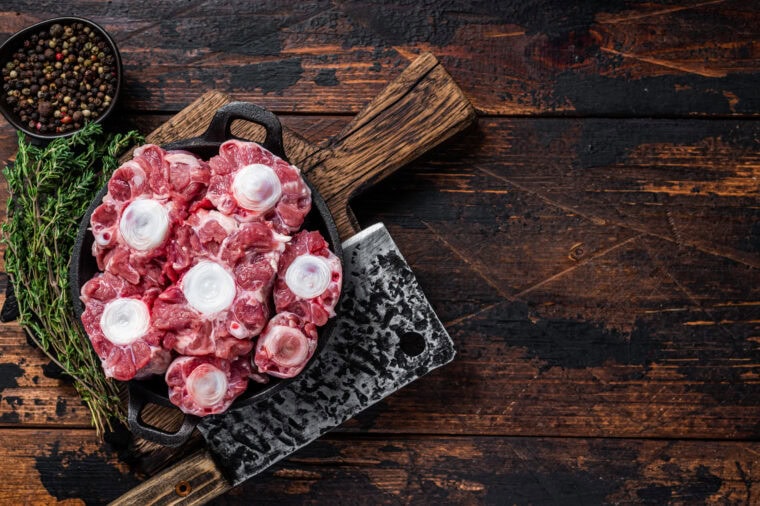
Click to Skip Ahead
One of the most common associations we have when we think of dogs is a dog with a bone. Years ago, it was common to just hand over any old bone to your dog, but today, we know this isn’t always a good idea. But what about oxtail bones?
Oxtail bones may be safe for some dogs, but this depends on your dog’s size and eating habits. Cooked oxtail bones should also never be given to your dog as there is a substantial risk of the bone splintering and becoming a choking or obstruction hazard.
We’ll give you more information about the benefits of oxtail bones for your dog as well as the potential dangers for you to be aware of.
How Are Oxtail Bones Beneficial?
Oxtail bones are the tails of cattle and can be purchased as a cross-section or whole. They are typically found with a thick and large bone in the middle surrounded by meat and fat.
What Are the Issues With Giving Dogs Oxtail Bones?
For the most part, giving a dog an oxtail bone can be beneficial in some ways, but there are some pretty significant issues as well.
Small Breeds
Small dogs shouldn’t be given oxtail bones, and in some cases, they shouldn’t be given any bones at all. Small or toy dogs, particularly those with small jaws and softer teeth, shouldn’t be given oxtail bones. They are better off with something like chicken necks.
Additionally, brachycephalic breeds have small jaw structures, which can lead to dental issues like overlapping and overcrowded teeth.

Cooked Bones
It’s never okay to give your dog a cooked bone as the bone dries out and becomes more brittle through the cooking process. This means it’s quite easy for the bone to splinter, which can damage the dog’s teeth, gums, throat, and gastrointestinal tract. Poultry bones and fish bones are amongst the worst culprits.
Additionally, many of the seasonings we use on meat can be toxic for dogs. You’ll want to avoid giving your dog any bones cooked in seasonings or any food off your plate.
Raw Bones
While raw bones are the best option, there is still a risk of bacteria causing Salmonella infection, which can be spread to us. This is a serious disease that isn’t terribly common in dogs, but there’s the potential when you’re not cooking the bone.
If your dog exhibits any of the following signs after chewing on a raw bone, you should bring your dog to the vet immediately:
Generally speaking though, the risk of such infections is very rare for healthy dogs that are offered human-grade oxtail bones.
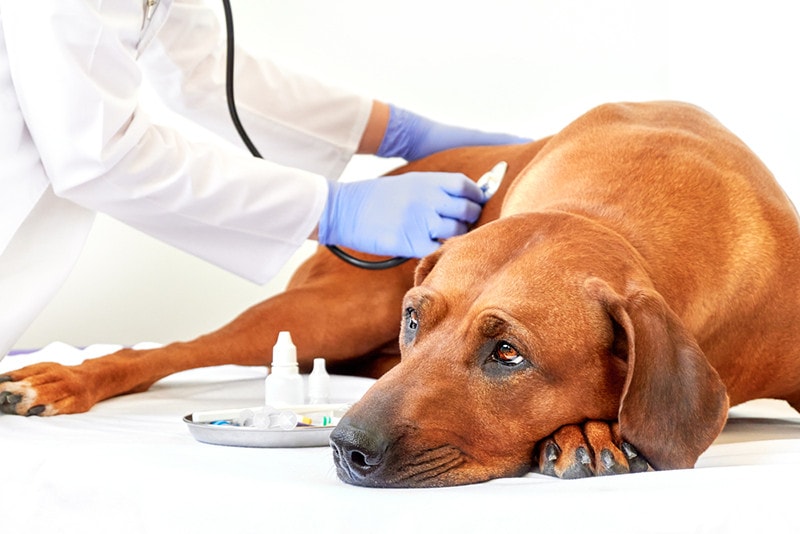
Tooth and Gum Damage
If you don’t choose the right bone size for your dog, there’s a risk of tooth breakage and damage to the dog’s gums.
Not only is the wrong size of bone a problem, but damage can occur with even an appropriately sized bone. The gums might get punctured, or they could break some teeth while gnawing.
Jaw Damage
Some dogs can potentially damage their jaws by trying to fit their mouth around the bone.
Round bones, like oxtail, can also potentially become stuck around your dog’s lower jaw behind the lower canine teeth.
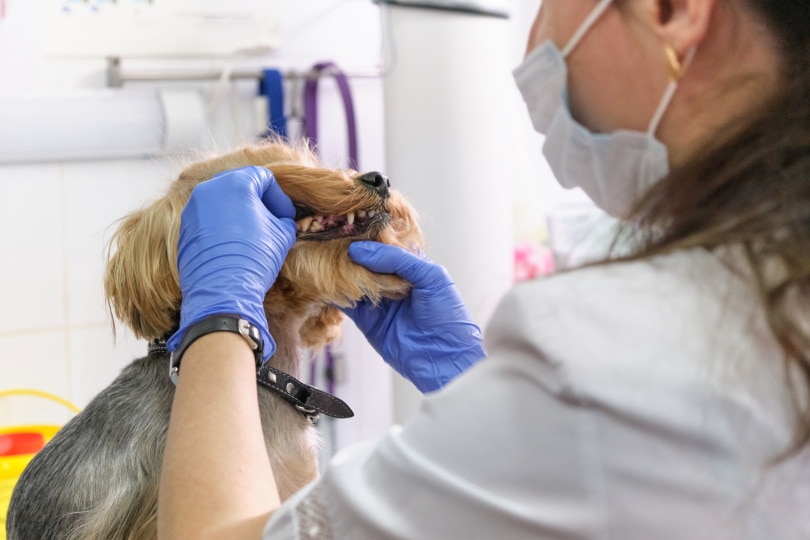
Choking Risk
Choking is one of the most significant reasons why some veterinarians are against dogs chewing on bones. This point also depends again on the bone’s size and how your dog tends to eat. Remember to always monitor your dog anytime you give them anything to chew on.
If your dog is a careful chewer of food and chew toys, they might be okay with a bone. But dogs that gulp their food down should probably avoid bones, as this is when choking can occur.
When chewing on an oxtail bone, some dogs might swallow it whole, where it could get stuck in the throat. Or the splinters of the bone could make their way into the intestinal tract and stomach, where they could cause damage.
Obstruction
When a dog chews off a large piece of bone and swallows it, they won’t be able to digest it. This undigested piece of bone might result in the obstruction of the digestive tract, often referred to as a gastrointestinal obstruction. Such dogs need medical care from a veterinarian (which may involve surgery).
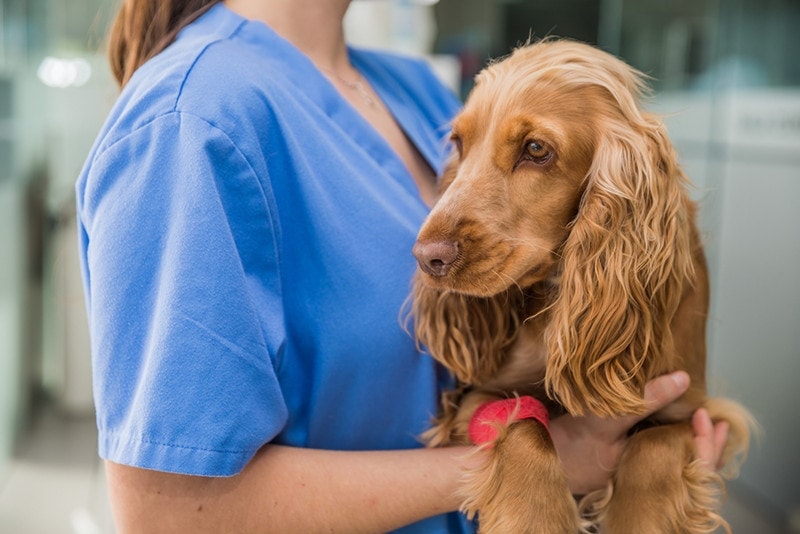
Can You Feed Your Dog Oxtail Meat?
As long as the bone is removed before giving it to your dog and it hasn’t been cooked with any seasonings or oils, oxtail meat on its own is a tasty treat for most dogs.
Don’t forget that things like onions and garlic are quite toxic for dogs. They’ll enjoy the cooked or raw meat without any special preparation. You can also consider making bone broth for your dog following dog-specific recipes.
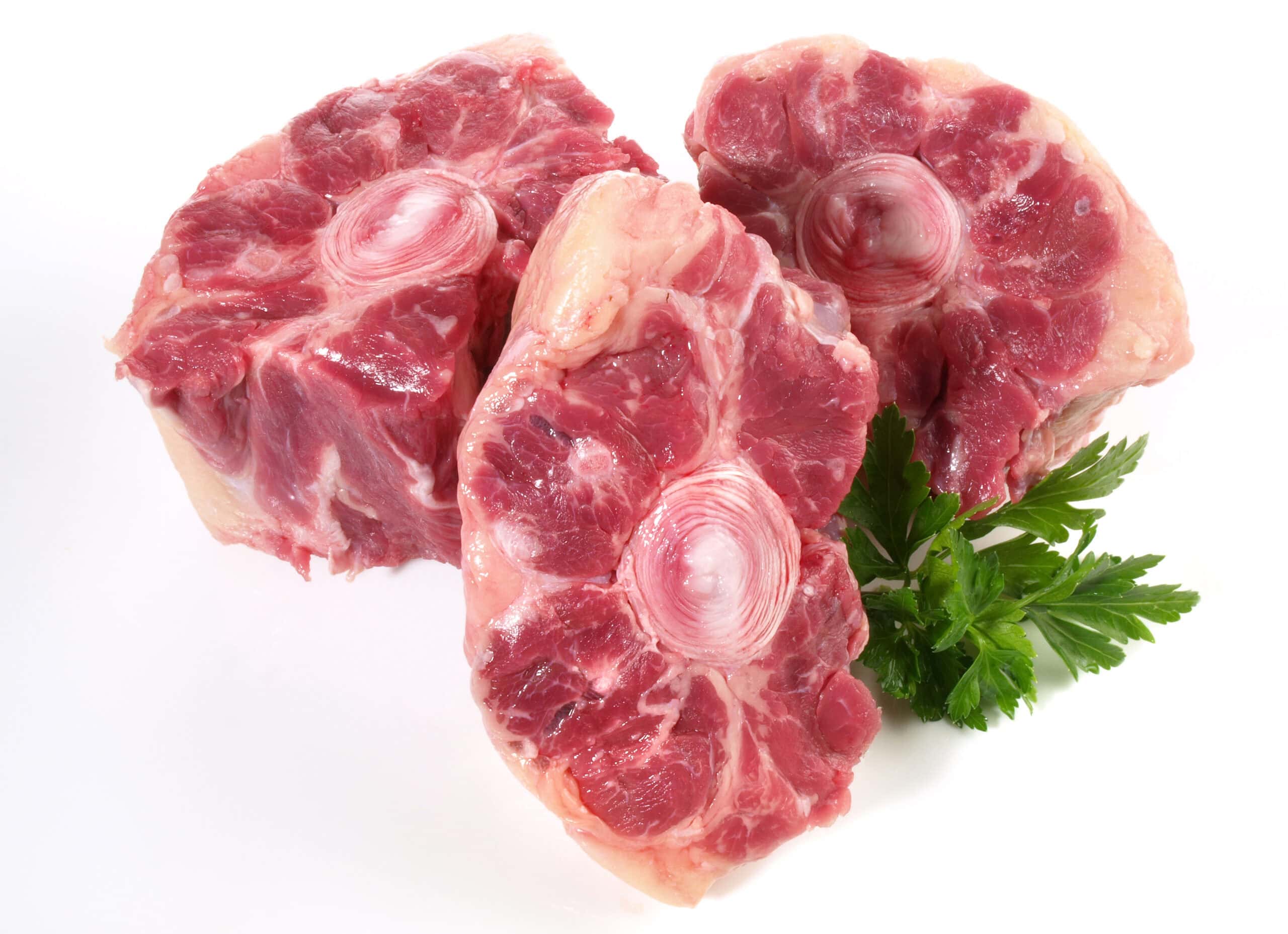
Alternatives to Bones
Judging from the opinions of many the FDA and the long list of risks associated with bones, giving your dog an oxtail bone, or any bone for that matter, might not be worth it.
Many dogs do successfully chew on bones without any issues, but in some cases you might need alternatives.
Veterinary Oral Health Council-approved rawhide is an alternative chew that you can try for your dog. Bear in mind that the same rules apply to any chewing treats as they do to bones. You want to ensure they are the right size for your dog, and you should monitor your dog at all times when they’re chewing on it. However, hides might not be appropriate for all dogs, and further input from your veterinarian is advised prior to considering them for your pet.
You can also try some dental chews as a means to keep your dog’s teeth healthy and clean. And regardless of what your dog is chewing, always supervise while they are gnawing away.
If you notice large pieces of bone or chew that have come loose, take any pieces away from your dog before they swallow them.
Conclusion
Whether or not you give your dog an oxtail bone, consider speaking to your vet before you try it. They might have an opinion on this and can provide you with feedback as to whether they are a safe treat for your dog.
If you decide to try out an oxtail bone on your dog, ensure you purchase it from stores that have them prepared and cut very specifically for dogs.
Remember to always keep an eye on your dog while they are chewing anything. The chew should be taken from them if it becomes too small, if you notice any blood on the bone and around their mouth, if your dog chews/eats very quickly, or if your dog seems to be in discomfort or pain while chewing.
Featured Image Credit: Mironov Vladimir, Shutterstock








